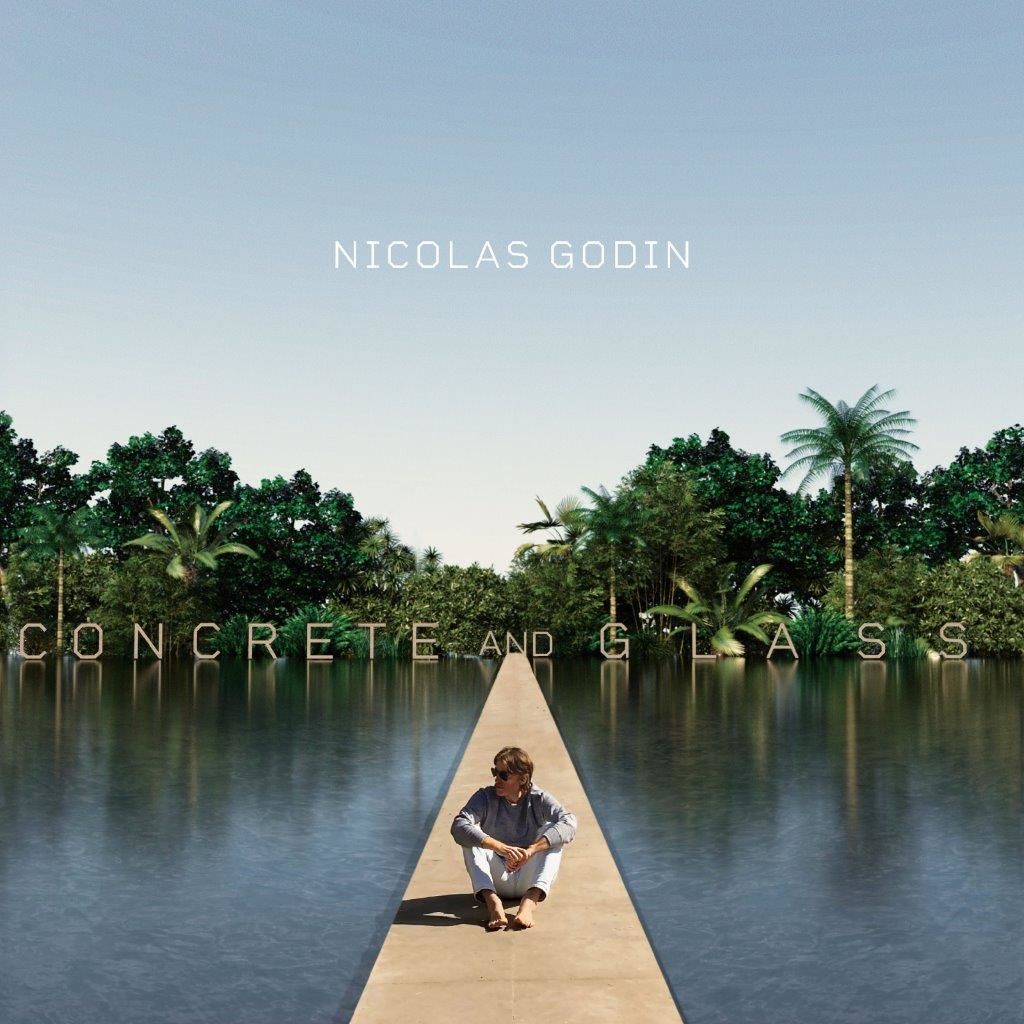Godin’s ‘Concrete and Glass’ is equally amour, imagination, et rêve
by Seamus McAvoy
2020-02-09

Nicolas Godin
Concrete and Glass
NCLS· January 24, 2020

“Your house is a fine little house, Jack.” — Virgil
“Fame, it’s not your brain, it’s just the flame/ That burns your change, to keep you insane.” — David Bowie, or John Lennon
The art of architecture is impossible to separate from the music of Nicolas Godin, a French multiinstrumentalist and composer that gained fame in the late 1990s as one-half of Air, and who recently celebrated his fiftieth birthday — one he shares with the West’s approximation of the birth of Christ.
Godin studied architecture at the National School of Architecture of Versailles, or ENSAV, located today in the Royal Stables of the Palace of Versailles — the same stables that were commissioned by none other than King Louis XIV. Who knows if the Sun King was prescient enough to expect that one act of architecture would one day house the institution that can claim names like Jeanne Gang, of Aqua Tower fame, or Moussa Mostafa Moussa, Egyptian architect and political figure, among its list of notable alumni, but there you are.
“Concrete and Glass,” the album’s opener and tonal centerpiece, occupies a similar space as Lars von Trier’s “The House That Jack Built” (2018), a film about a middling architect-turned-serial-killer. One auteur described it as “50 percent ‘Cabin in the Woods,’ 50 percent ‘Curb Your Enthusiasm.’” The film prompted walkouts en masse when it premiered at Cannes Film Festival; Godin’s effort evokes no such reaction.
Concrete and Glass wastes no time in establishing its dichotomies. The two are stand-ins for the sinister and the sexy, respectively, with the sublime as the product. “I’m looking for a house/ Made of concrete and glass,” open the lyrics after nearly three minutes of instrumentals, rooting the record in an architectural space.
“Back To Your Heart” follows, a variation on the established theme. The sound is closer to a sort of electronic-lounge, dark as it is seductive — one can imagine Isabella Rossellini standing in for the exceptional Kate NV, on a stage drowned in blue light, singing for a scheming Frank Booth.
Any new project from Godin provides the excuse — as if one was really necessary — to revisit 1998’s Moon Safari, Air’s brilliant debut and most critically acclaimed album to date. In part due to that record’s timeliness, “What Makes Me Think About You” could easily slide easily onto that track list. The same may go for a number of other songs from Concrete and Glass, but the particular rhythms and distortion of the vocals feel especially Air-like.
“Politics is a kind of architecture, isn’t it? With people as your raw material.” — Il Duce
What is it about modern architecture that evokes such a palpable feeling of existential dread? Perhaps because it is pornography of the sky; concrete-and-glass defiance of the natural order as ordained by God; a material erection clawing upward, taunting its creator. Gang’s Aqua Tower will outlive all of us — for the most part, not even earthquakes can topple a skyscraper built with an adequate foundation and proper flexibility. When one stares at the glass-paneled John Hancock tower, their mortality is reflected back toward them. Henry N. Cobb won’t live to see his creation fall, he’ll have only lived to see it erected.
“What?” — Richard Nixon
Concrete and Glass, like Air at its best, is equal parts Amour, Imagination, et Rêve. Had von Trier not opted to use David Bowie’s “Fame” almost exclusively for the “House That Jack Built” soundtrack, certainly a number of these tracks could suffice in communicating a similar tone.
“Cité Radieuse” closes the album, and the name comes from a literal “house of concrete and glass.” It means “Radiant City,” referring to the most famous building from an urban housing development project in Marseille, France. It still stands today, and is regarded as an extremely influential work of modernist architecture that kickstarted the brutalist wave. Anyone still lamenting the architecture of the Boston City Hall can thank Charles-Édouard Jeanneret, or “Le Corbusier,” a nickname he gave to himself. The real Cité Radieuse is rather horrid, but Godin’s track is a delightful closer.
Lars von Trier’s “Jack” is obviously more depraved than the aforementioned architects, but one still would be forgiven for asking what went wrong in their minds. Thankfully, Godin opted for a career in a less sinful medium.
